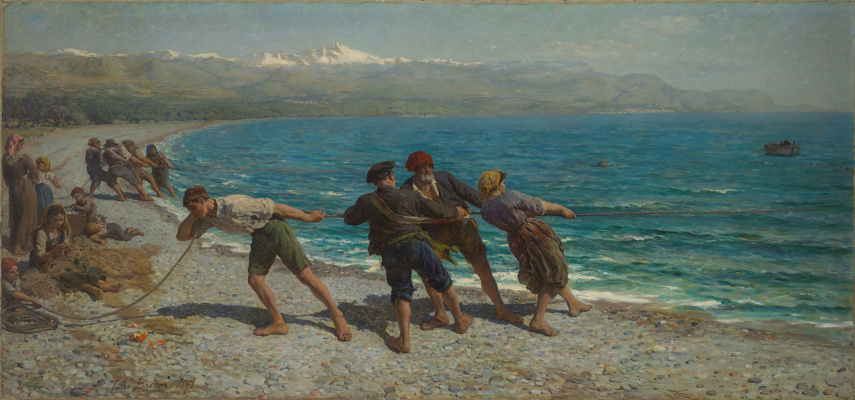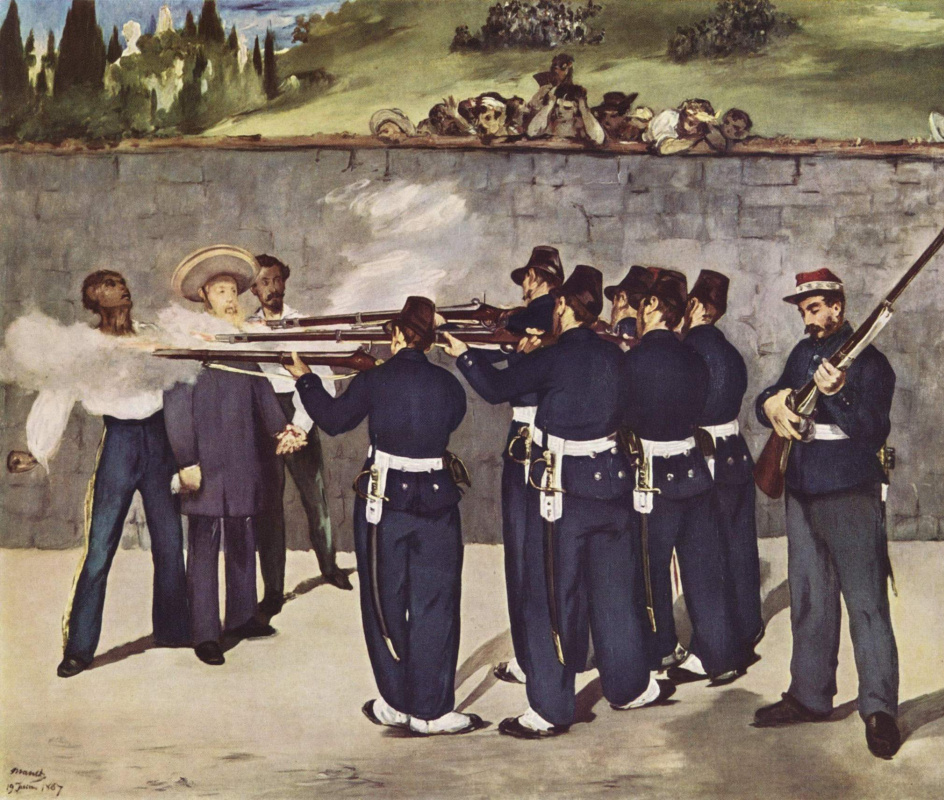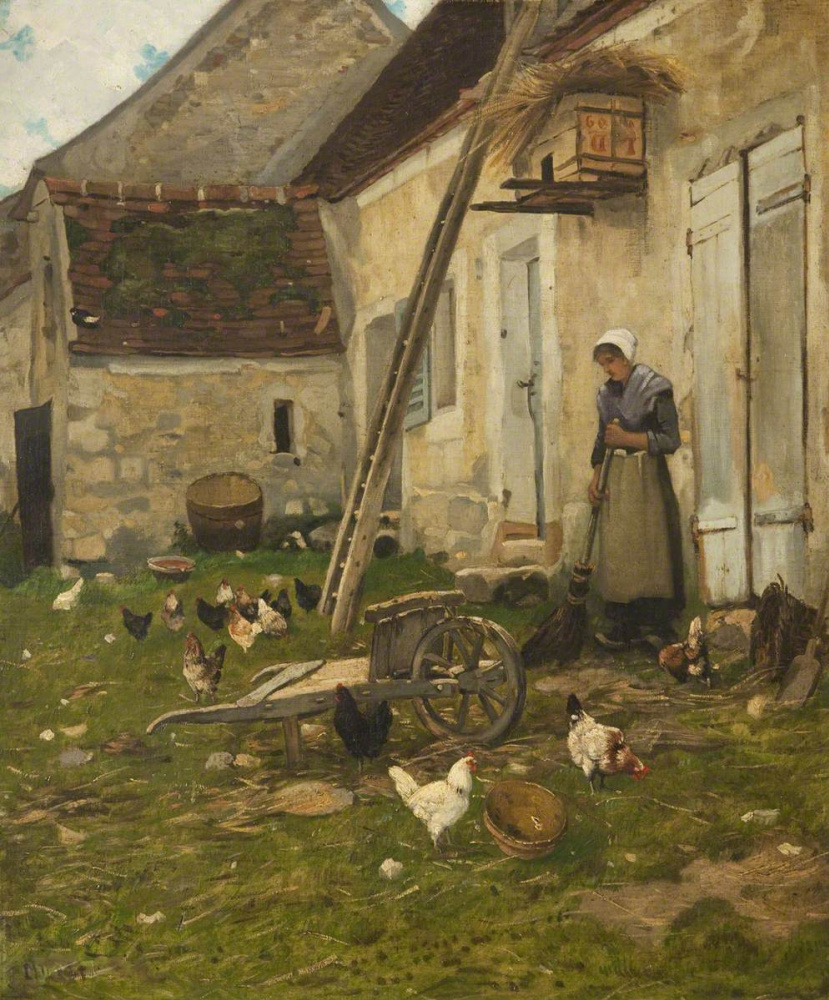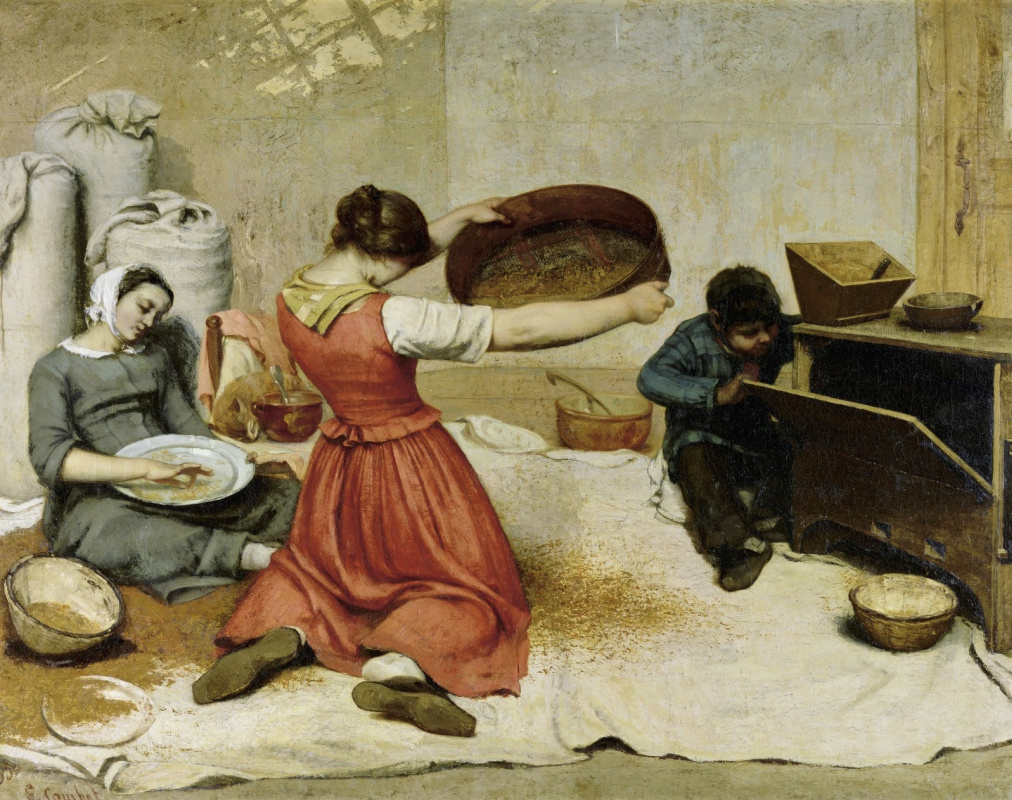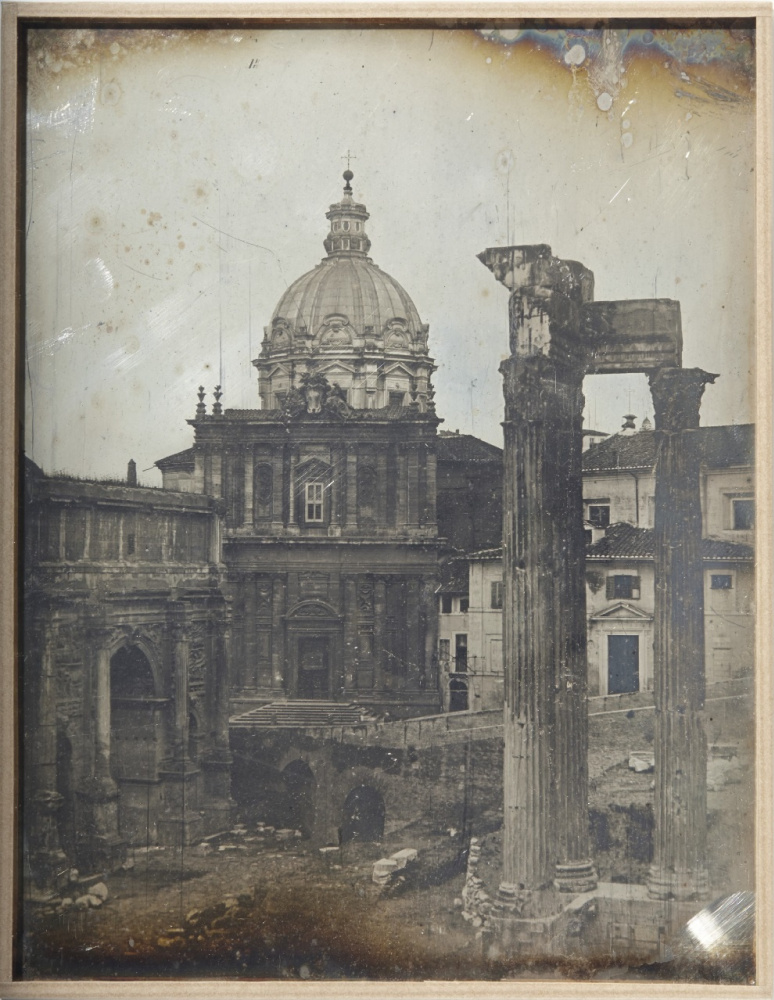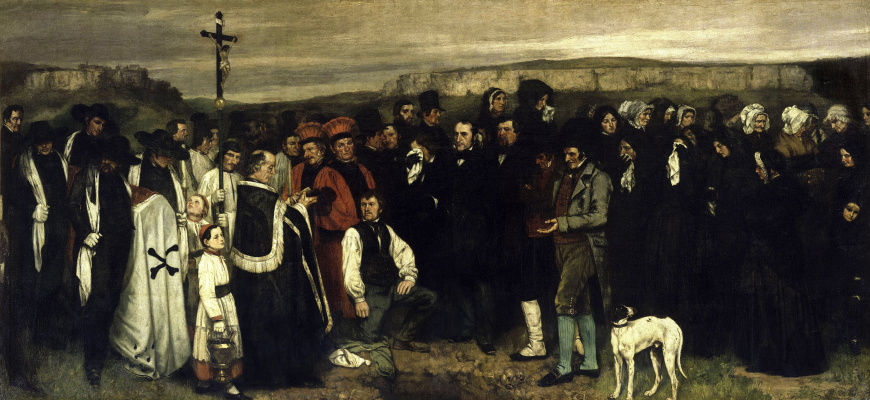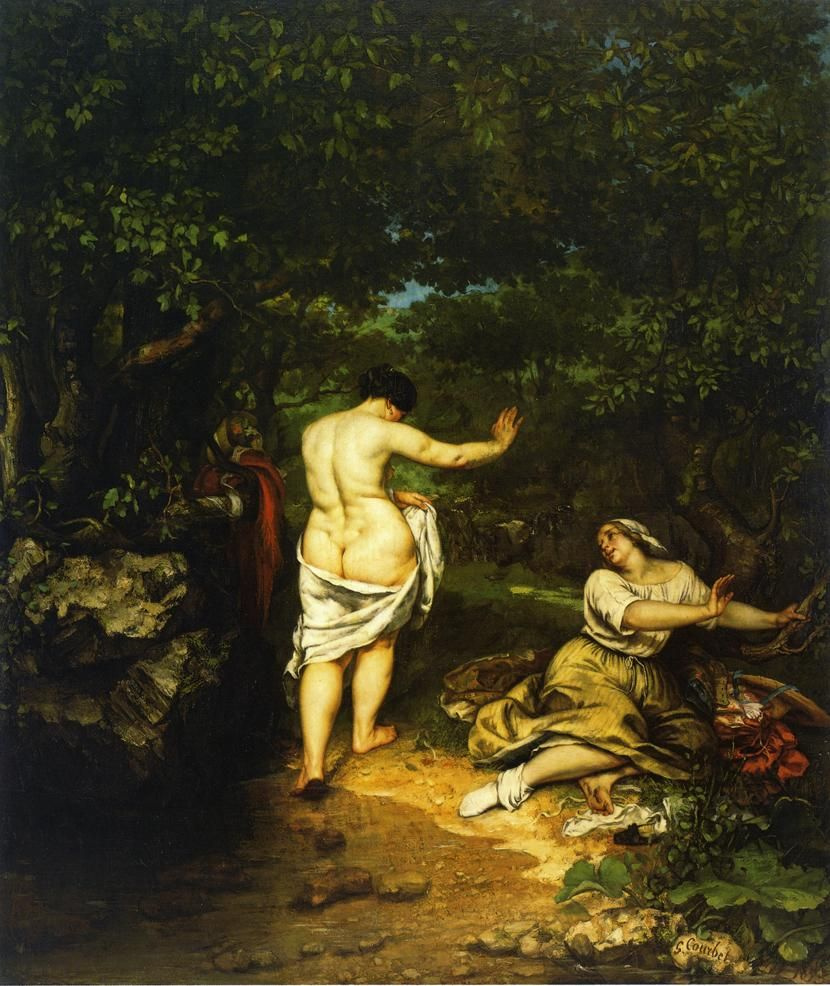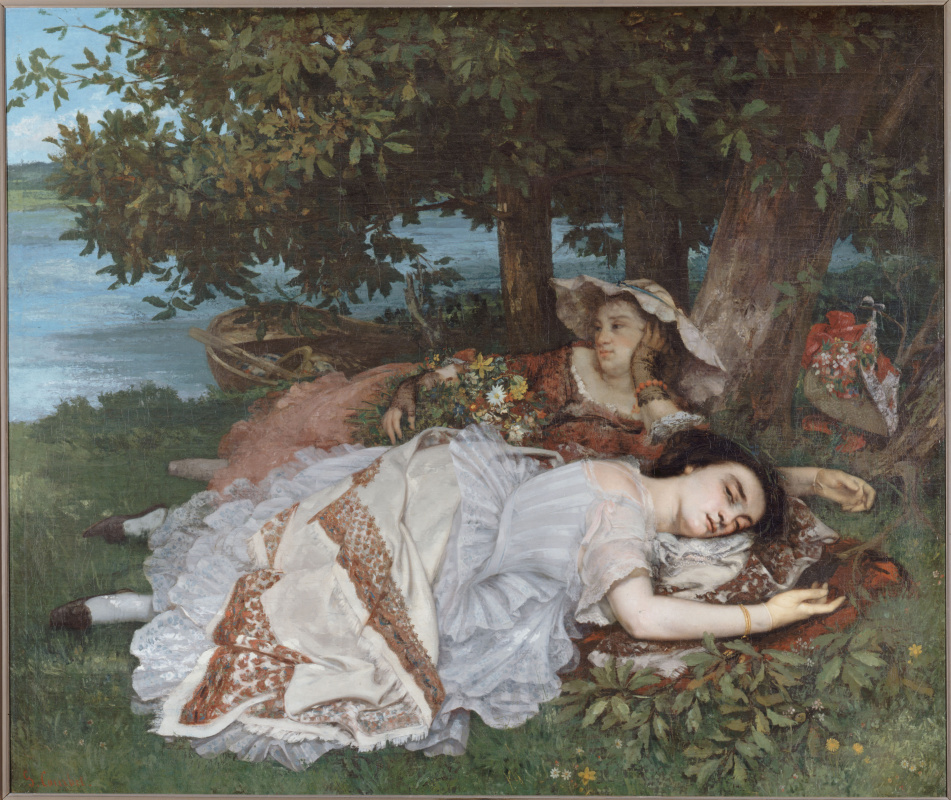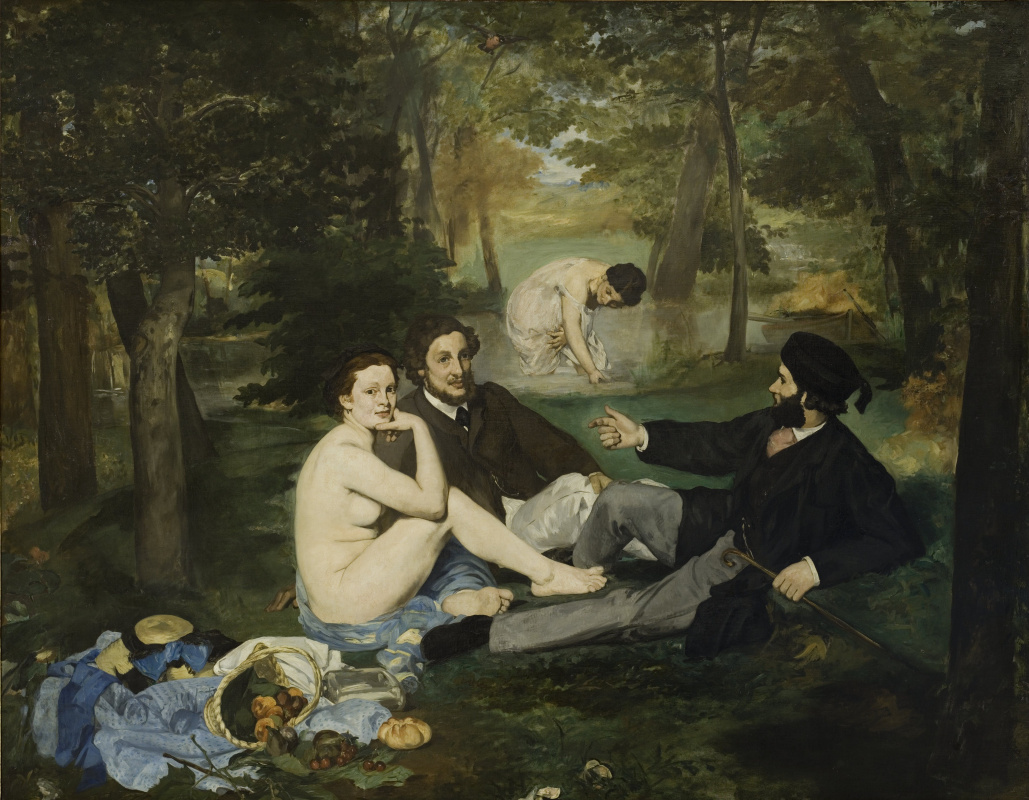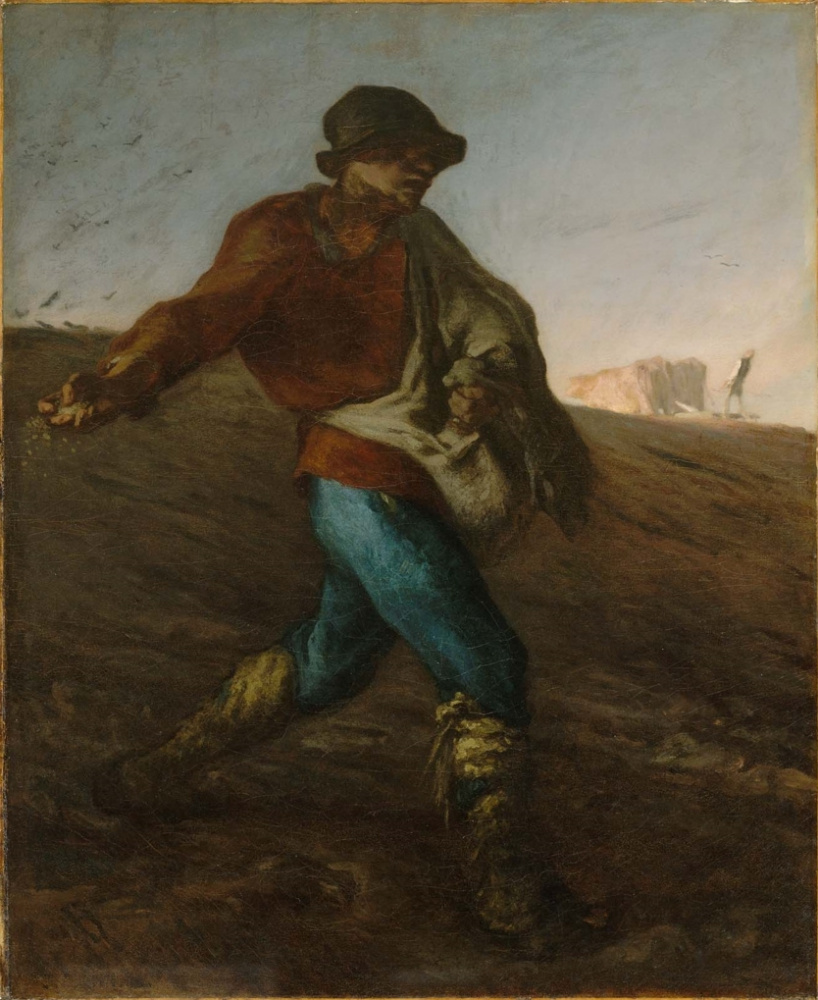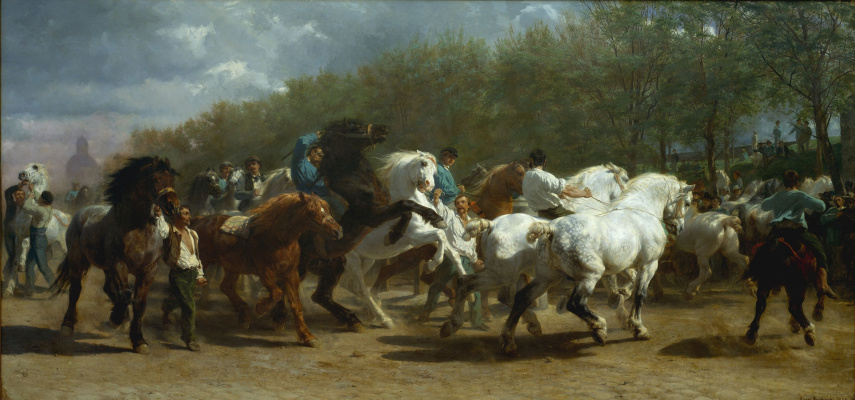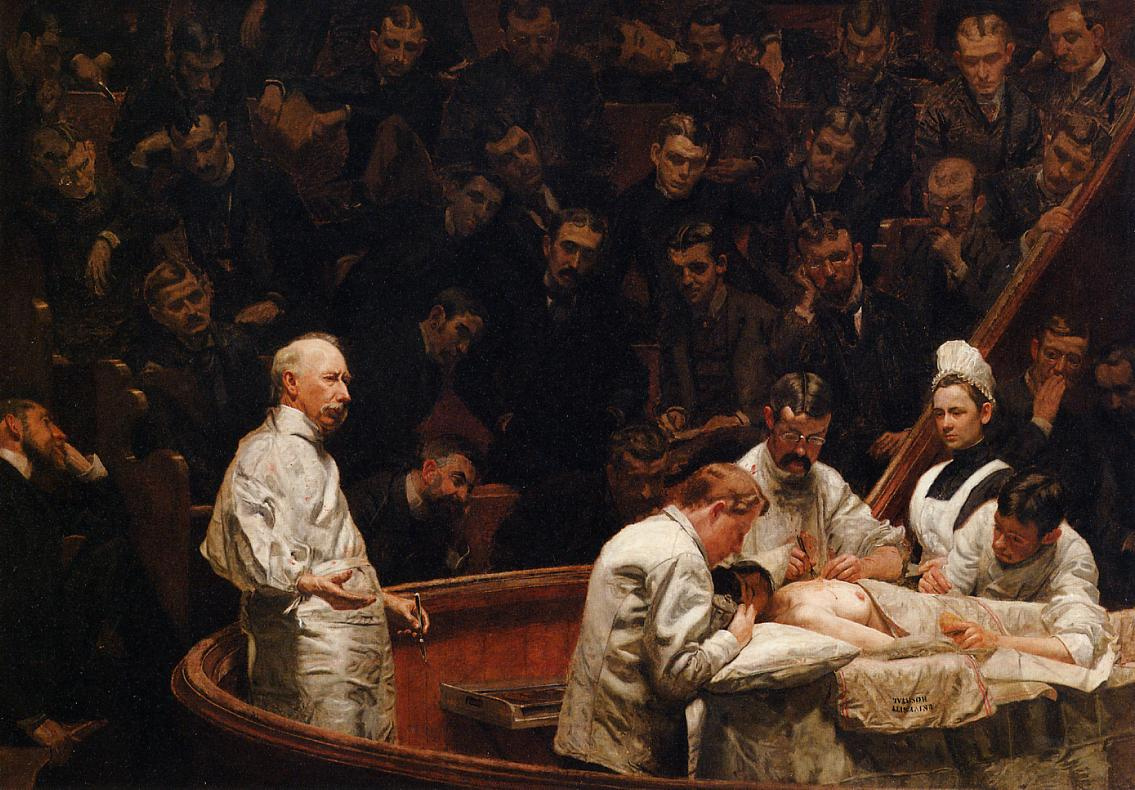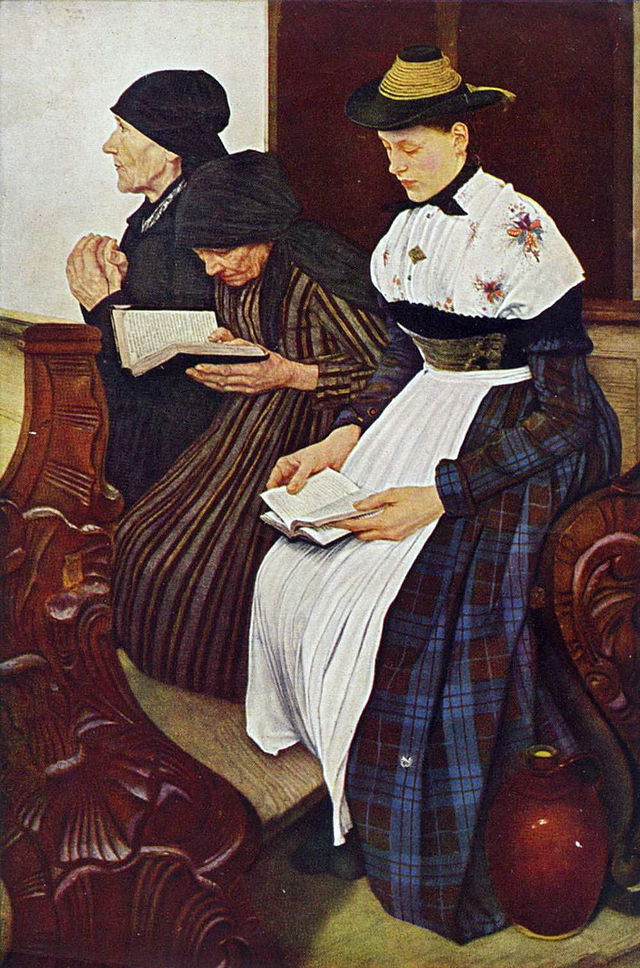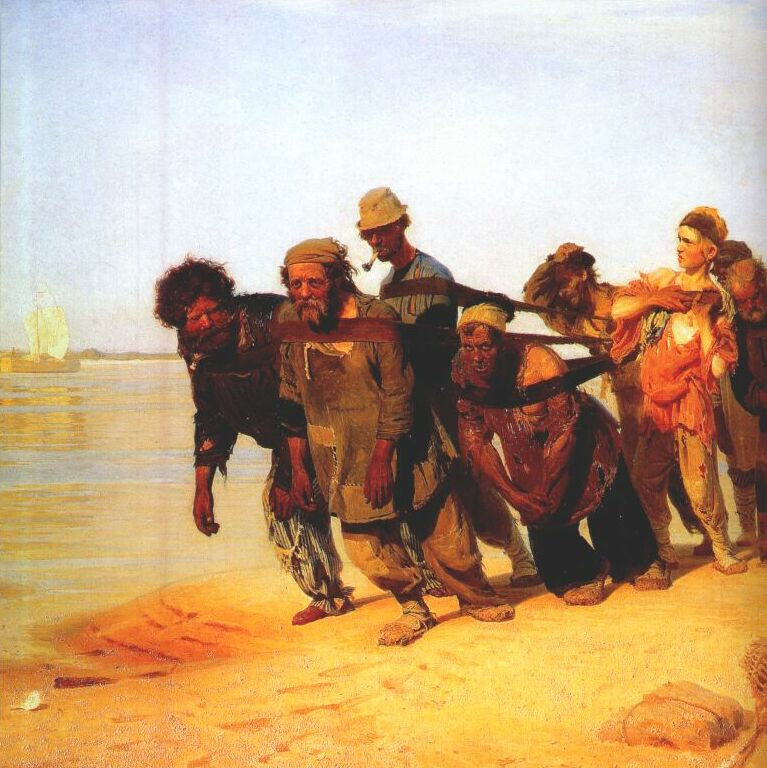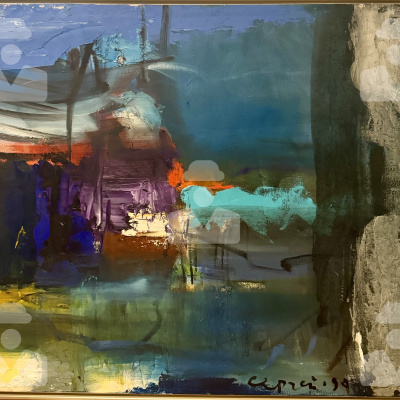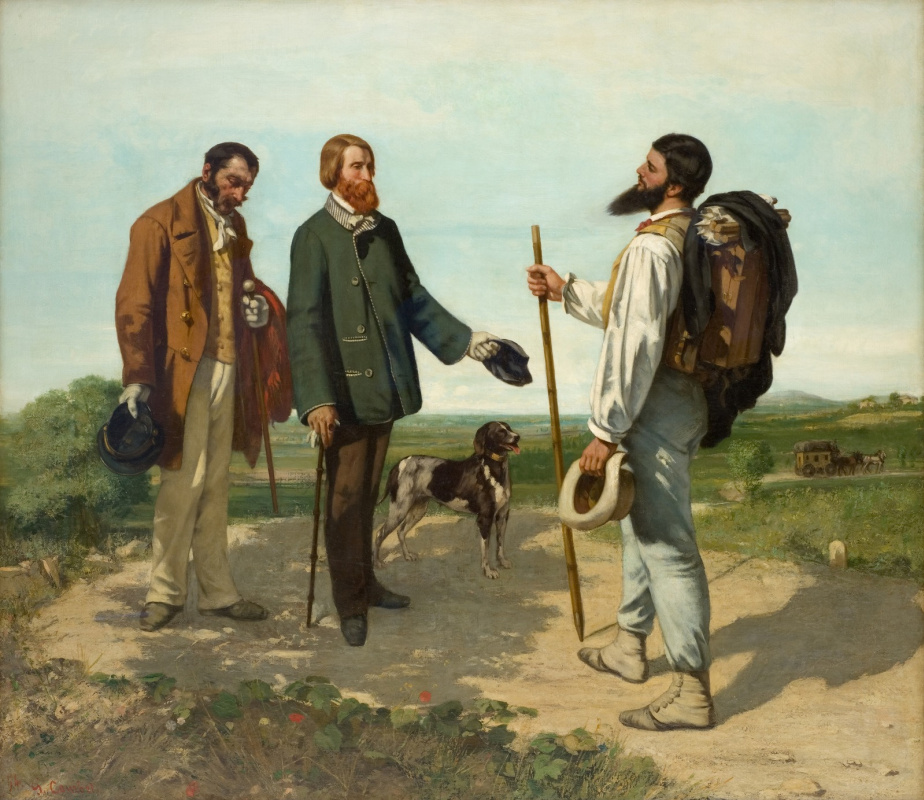Realism (from late Latin reālis — "real") is considered to be the beginning in the development of modern art. In a strict sense, "realism" is an art movement that faithfully and objectively reproduces reality in all its details, regardless of how beautiful are the objects in the picture.
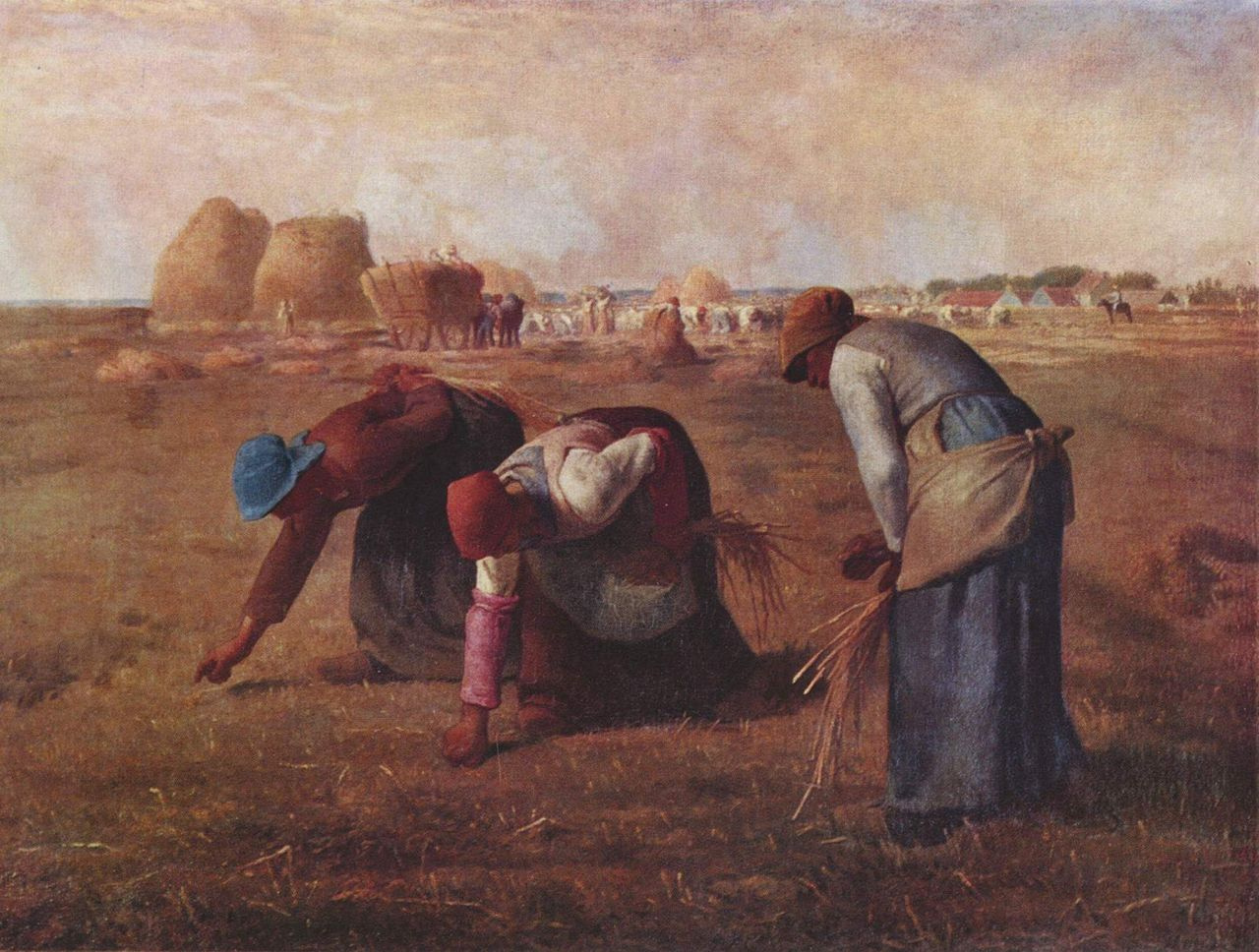
From a philosophical point of view, realism may be said to have picked up the progressive goals of modernism, striving for the new horizons through the revision and refutation of the traditional value systems and beliefs. Everyday life and the modern world have become the suitable objects for art that was designed to capture reality accurately and objectively.
Fishermen in Menton (Fishermen of the Mediterranean).
1878, 121×256 cm
Realism started its journey in France in the 1840s. It revolutionized painting and expanded the general concept of art. Working in an era marked by the numerous social changes, the realist artists replaced idealistic images and literary representations of the traditional art with real events, gave them the same significance as the historical paintings and allegories had. The desire to bring everyday life into their canvases was a manifestation of the artists' desire to combine art and life.
The execution of Emperor Maximilian I
1868, 252×305 cm
Realism affected many social, economic, political and cultural aspects by depicting them unvarnished. Romantic landscapes, which gradually became the scene of a conflict between man and nature, began to lose relevance. The palette of realist artists leaned towards dark, earthy shades, which was against the ideals of high art beauty. The themes of the paintings were often accusatory, ridiculing the mores and values of the bourgeoisie and the monarchy, which patronized the art market. Nevertheless, realists still remained among the participants of the famous Salon and worked within the framework of the Academy of Arts. When newspapers came into common use, many artists, such as Gustave Courbet, Édouard Manet used them to maintain interest in their works and ideas they espoused.
Peasant yard
1860-th
, 65×55 cm
The French realism was a response to the ever-changing state power systems — the First, Second and Third Republics, between which the Empires were born and destroyed, two revolutions and a war passed. The development of a new worldview in art was also facilitated by the free press, the growth of social critical journalism and caricature, which occurred at the beginning of the July monarchy (1830—1848). All these processes were accompanied by rapid industrialization, urbanization of cities and aggressive colonial policies.
Lovers
1854, 131×167 cm
Another factor for the development of realism was the emergence of photography: in 1839, Louis Daguerre publicly demonstrated the principles of image capture based on the photosensitivity properties of silver iodide. Photography has become a form of art, claiming the full veracity of the image.
Temple of Vespasian, Rome
1842, 24×19 cm
One of the pioneers of realism was the artist Gustave Courbet, who severely criticized the authorities, the bourgeois mores of society and the institution of artistic education. His painting A Burial at Ornans (1849−1850) marked the debut of realism as a new and significant force on the European art scene. Of course, the painting with a naturalistic depiction of a rural funeral caused a great scandal in the Salon, which traditionally showed works of allegorical and historical subjects.
A funeral in Ornans
1850, 668×315 cm
One of the striking examples of radical authenticity was The Bathers of Courbet, which caused another scandal at the Paris Salon of 1853. Two burly half-naked peasant women on the river bank provoked a real bilious attack (dirty heels!) among critics, which even Manet with his Breakfast on the Grass never did. When Napoleon III passed by the canvas, he could not control his feelings and hit it with his whip. Even Courbet’s supporter, Eugène Delacroix was annoyed by the "disgusting vulgarity of the shapes" depicted in the picture.
Bathers
1853, 193×227 cm
At the Salon of 1857, another scandal erupted: critics attacked the painting Girls On the Banks Of The Seine, which depicted slumbering girls of loose morals. However, Gustave Courbet opened a workshop soon, in which he gathered more than 30 students. He formulated his principles to the audience like this: "Do not do what I do. Do not do what others do. Even if you did what Raphael once did, you would sacrifice your own art, which is tantamount to suicide. Do only what you see and feel for yourself."
Girls on the banks of the Seine (Summer)
1857, 206×174 cm
Edouard Manet took realism even further when he presented his Breakfast on the Grass at the 1863 Salon. The frank image of two young dandies eating in the woods with women of pleasure offended many representatives of the bourgeoisie who visited the Salon with their families. Such realism "offended the eye", and the Salon rejected the picture, but it was shown in the Salon des Refusés. Another slap in the male ego was done by The Olympia, which Manet introduced in 1865: it made the viewer an involuntary visitor to the brothel.
Breakfast on the grass
1863, 208×264 cm
Scandals in the press played into the hands of Courbet and Manet, making them stars in the art world. Thea rtists not only challenged the state system, but they also showed by personal example the great possibilities of organizing their own expositions and pavilions within large-scale exhibitions — for example, the Universal Exhibition of 1855, where Courbet had his own pavilion of realist art.
Sower
1850, 101.6×82.6 cm
Courbet related his realistic paintings with a socialist point of view, whereas many other realist artists were genuinely interested in the life of the lower classes and represented it in the halls of high art, e. g. Jean-François Millet, Rosa Bonheur, Jules Breton.
Horse fair
1855, 244.5×506.7 cm
Realism was born in France and gradually became popular throughout Europe and stepped over the ocean. American artist James Abbott McNeill Whistler became friends with Courbet in the 1860s and began to work in the style of realism, but rejected the idea of his new friend that painting could serve for social moralizing. The prominent realist artist in the United States was Thomas Eakins, who became famous for his portraits and paintings featuring athletes and surgeons at work.
Another follower of Courbet was the German realist painter Wilhelm Leibl, who was best known for his peasant scenes. He introduced the frank naturalism of the Dutch and German Old Masters in the modern era.
In Russia, Ilya Repin is rightfully considered the most prominent representative of realism. The "pure art" theories occupied him at some point, but his best works are far from them. The ideological orientation of Ilya Repin’s paintings was not a flaw, but rather his strongest side. Historical painting, peasant life, exiles — these themes deeply touched Repin and, by and large, they glorified his name, catalyzed by his association with the Itinerants.
Barge haulers on the Volga. Detail
1873, 131.5×281 cm
The creative achievements of Courbet and Manet anticipated the pictorial quest, which was necessary for impressionism
to arise. The use of contour lines to structure the shape and divide it into colour spots inspired the post-impressionist Paul Cézanne and his followers, as well as cubists Pablo Picasso and Georges Braque. Realism anticipated the development of such areas of pictorial art as photorealism and hyperrealism.
Hello Mr. Courbet
1854, 129×149 cm
The realism artists were Gustave Courbet, Édouard Manet, Jean-François Millet, Rosa Bonheur, Jules Breton, Ilya Repin, Thomas Eakins, Honoré Daumier, Jean-Baptiste Lepage, Silvestro Lega.






